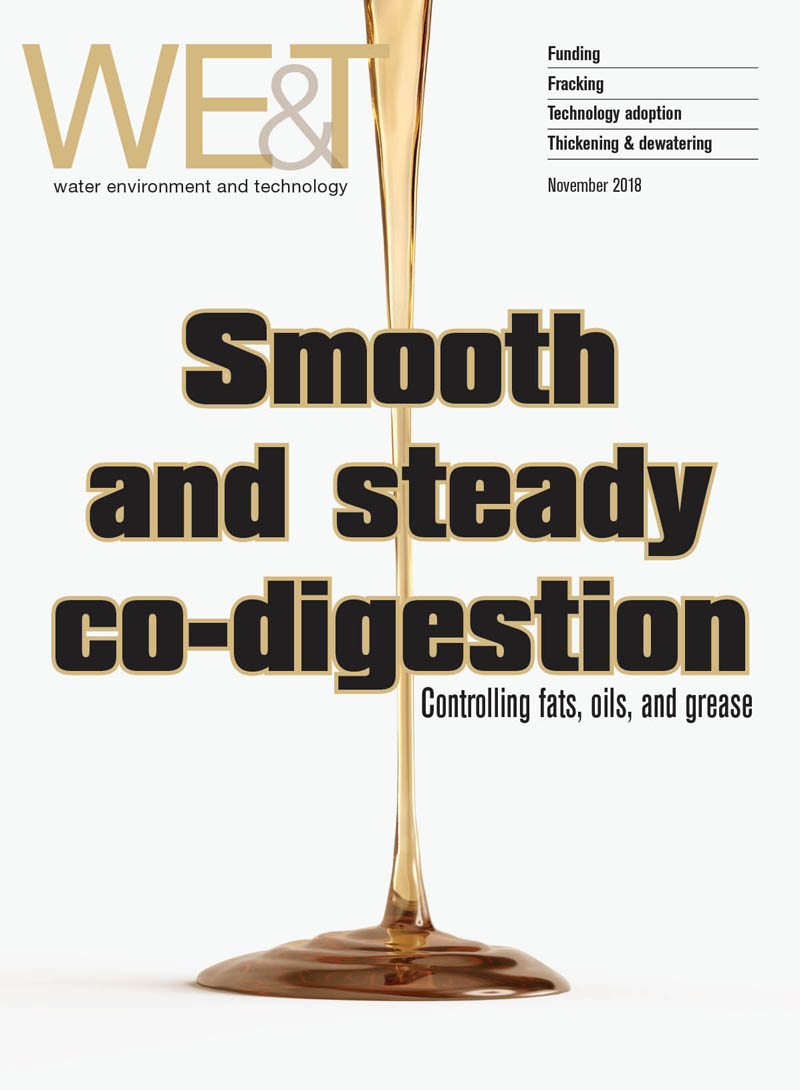Design of Water Resource Recovery Facilities, Manual of Practice No. 8, Sixth Edition

Water Environment Federation, WEF Press, 601 Wythe Street, Alexandria, VA 22314; McGraw-Hill Education, Two Penn Plaza, New York, NY 10121-2298, 2256 pp., (2018) $325, Hardcopy, ISBN 978-1-260-03118-8.
Design of Water Resource Recovery Facilities now has its sixth edition. Known alternatively as Manual of Practice (MOP) 8 or American Society of Civil Engineers (ASCE; Reston, Va.) Manual and Reports on Engineering Practice No. 76, it has been one of the most authentic, authoritative, and comprehensive reference books on the design of municipal water resource recovery facilities (WRRFs). The manual consists of 25 chapters with each chapter focusing on a particular topic or treatment goal.
Comparing with fifth edition, the new volume has gone through significant changes. The authors deleted and minimized the description of treatment technologies that are no longer in current practice. They covered information on treatment fundamentals in more concise detail. They added or updated several key technical topics, such as application of wastewater process modeling in design, advances in membrane bioreactor technology, biosolids handling, side-stream nutrient removal, integrated fixed-film/activated sludge systems, and moving-bed biological-reactor systems.
Chapters 1 through 8 focus on site selection to facility hydraulics to corrosion control topics. Chapters 9 through 17 cover the treatment processes and operations in considerable detail. Chapters 18 through 25 deal with management of solids generated during wastewater treatment. Design examples also are provided in some chapters including facility hydraulics, biofilm reactors, activated-sludge process, and solids management to illustrate the application of guidelines and concepts.
The manual is prepared by a task force consisting of members from the Water Environment Federation (Alexandria, Va.) and ASCE’s Environmental & Water Resources Institute. Although each chapter is written by a different group of authors, the transitions between chapters are smooth. There’s also little repetition. The style and nomenclature are uniform and easy to follow.
Undoubtedly, this book will continue to be the water sector’s principal and leading manual on the design of municipal WRRFs. It will remain an indispensable compendium for design professionals, utility managers, and process engineers.
•••
Rasheed Ahmad is a senior watershed manager in the Department of Watershed Management for the City of Atlanta.
•••
Reviewers Needed
Water Environment & Technology (WE&T) seeks volunteers to join its book review team.
Stay up-to-date on the latest wastewater treatment and watershed issues by contributing brief, informative reviews for the Water Volumes column. Reviewers get to keep the books they review.
To be considered, please contact Margaret Richards at mrichards@wef.org.
•••

